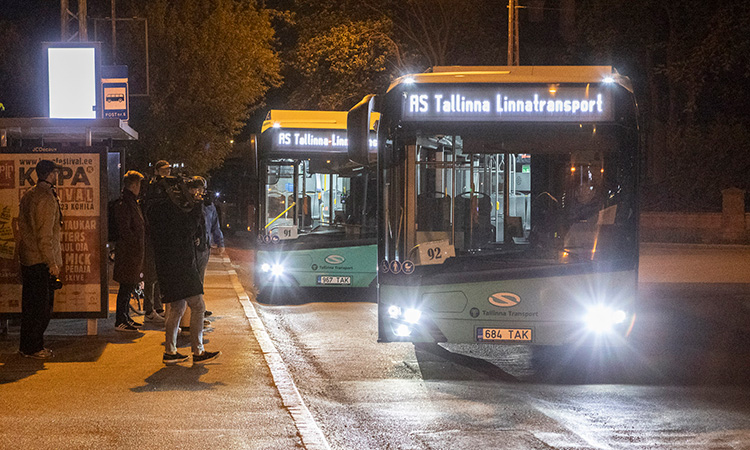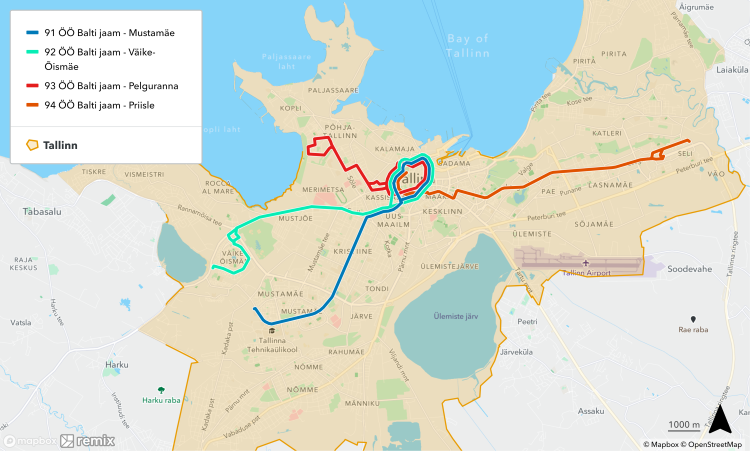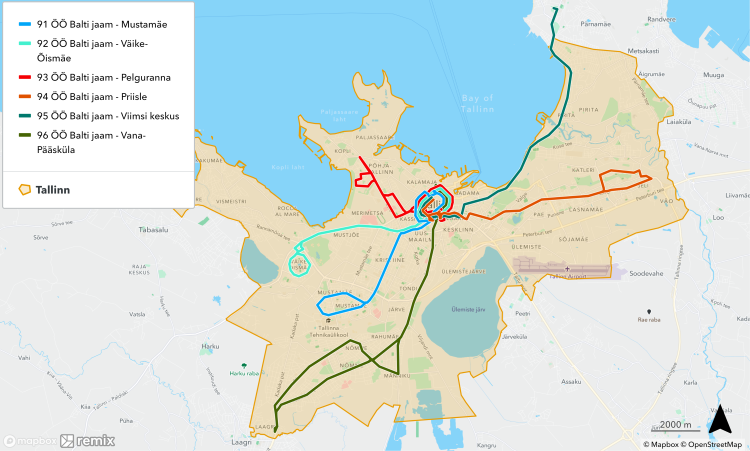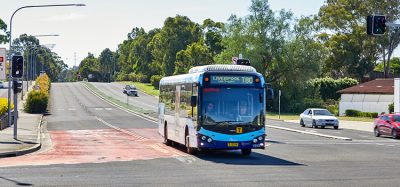From dusk till dawn: Tallinn’s journey towards 24/7 public transport
- Like
- Digg
- Del
- Tumblr
- VKontakte
- Buffer
- Love This
- Odnoklassniki
- Meneame
- Blogger
- Amazon
- Yahoo Mail
- Gmail
- AOL
- Newsvine
- HackerNews
- Evernote
- MySpace
- Mail.ru
- Viadeo
- Line
- Comments
- Yummly
- SMS
- Viber
- Telegram
- Subscribe
- Skype
- Facebook Messenger
- Kakao
- LiveJournal
- Yammer
- Edgar
- Fintel
- Mix
- Instapaper
- Copy Link
Posted: 20 February 2024 | Olev Parts - Tallinn Transport Department | No comments yet
Olev Parts, MSc, Senior Specialist of Public Transport at the Tallinn Transport Department, provides insight into the pivotal role of data analytics and community engagement in shaping Tallinn’s innovative night public transport system, offering a glimpse into the strategic decisions and collaborative efforts driving urban mobility forward in the Estonian capital.


Credit: Tallinn Transport Department
Following a successful pilot project during the summer of 2023, the night public transport service is a relatively new addition to the services that are offered in Tallinn. The first four night lines were introduced during a pilot project in 2023, and two additional night lines were added at the start of 2024 to service all eight districts of Tallinn. The aim is to offer a safer and more affordable alternative to night transport, thus increasing accessibility to cultural and social interactions.
Before the night lines
Ride-hailing and car-sharing services dominated the night transport market, being the only choice of transport (in addition to micro-mobility) for night-time workers and cultural consumers”
Before the pilot project in 2023, Tallinn was one of the last European capital cities without a night public transport service. Privately owned ride-hailing and car-sharing services dominated the night transport market, being the only choice of transport (in addition to micro-mobility) for night-time workers and cultural consumers. The idea of night-time public transportation services provided by the city had been discussed as early as 2019, and on certain occasions like New Year’s Eve, night service on the public transport lines was already provided, but Tallinn did not have night-time services as a regular part of the public transport network.
The Pilot Project 2023
The Tallinn Transport Department planned the public transport lines in Tallinn based on travel demand, focusing on the main traffic hours during the day. The basis for determining the routes of the lines is the travel demand data on movements between registered homes, workplaces and other attractions. Data on places of residence, work and schools provide information on the potential travel demand during peak hours, when the number of movements is highest. Public transport during the night-time warrants a different approach, as the main drivers of demand are cultural consumption and social interaction.
Public transport during the night-time warrants a different approach, as the main drivers of demand are cultural consumption and social interaction”
The pilot project took place from 15 May to 15 September 2023 and introduced four lines that were geometrically similar to existing high-usage daytime lines familiar to the user. The first four lines (91, 92, 93 and 94) serviced the most densely populated urban areas in Tallinn – Mustamäe (91), Lasnamäe (92), Põhja-Tallinn (93) and Haabersti (94). The line names included the word ‘night’ after the number, “öö” in Estonian, which is a rather peculiar and hard-to-pronounce word for those not familiar with the language. Night buses started their routes from Balti Jaam, which is the central multimodal transport hub in Tallinn. The night bus network covered six out of eight city districts at that point and provided service on Thursday, Friday and Saturday nights from 00:30 to 05:00.


Credit: Tallinn Transport Department – The night bus network during the pilot project in the summer of 2023.
Cautionary considerations regarding safety in the night buses and pre-emptive measures in co-operation with a security company were taken, but the project positively showcased the mindfulness and consideration of the passengers’ surroundings and fellow travellers in the buses. There were no incidents during the pilot project, and the passengers were actually livelier than the usual public transport user.
There were considerations for implementing tram and trolleybus lines with extended operating hours to accommodate night-time public transport needs. However, ultimately, the decision was made in favour of buses. The central focus was flexibility and easier maintenance of the rolling stock and infrastructure during the night in case of any potential issues that may arise.
What we learned and how we adapted
Below are some figures from a user survey held by the Tallinn Strategic Management Office on the last month (August 2023) of the pilot project:
- Origin: 70% of nightline users came from either nightlife establishments or from visiting a friend, and 13% of passengers came from work
- Destination: 76% of the night bus users were going home
- Motivation: When asked about the reason for using night transport, 60% of the users highlighted that, as of 2012, public transport (including the night bus) in Tallinn is free for residents, students until the age of 19 (included), and seniors aged 65 and above
- Alternatives (multiple choice): 74% of respondents would have chosen taxi or ride-hailing as an alternative to the night bus and 31% of respondents would have walked
- Safety: Over 90% of the respondents felt safe at the bus stops and while on the bus
- Route suitability: 90% of respondents expressed satisfaction with the routes. Among the 117 suggestions received, 66% mentioned additional or extended routes, while 24% recommended increasing the frequency of departures
- Seasonality: Almost 90% of respondents said that they would use the nightlines during autumn and winter.


Credit: Tallinn Transport Department – The night bus network from January 2024.
Usage data on the operational days revealed that about 90% of the night bus trips occurred on Friday and Saturday nights”
Upon examining the night bus usage statistics that were collected by the automatic passenger counting devices installed on the newer buses, we had observed a correlation between line usage and factors such as residential area density and distance from the city centre. The two most used lines, 94 and 92 (66% of users during the average weekend), covered the most densely populated districts – Lasnamäe and Mustamäe. Furthermore, Line 93, which served the Põhja-Tallinn district and is the closest to Balti Jaam, had the lowest number of users. The most popular departure times were between 00:30 and 02:00 and usage data on the operational days revealed that about 90% of the night bus trips occurred on Friday and Saturday nights.
We considered the feedback and went back to the drawing board. Since all lines started from Balti Jaam, where buses had a bus park, we had the opportunity to alter the routes at the end to extend them, thereby covering more residential areas with each line. Modifying the routes after six months of operation also allowed users enough time to become accustomed to the night lines, which were based on popular routes during the pilot project.
Furthermore, we optimised service hours and weekdays – operations continued on Friday and Saturday nights, with service times now only extended until 03:30. The last departure only accommodated passengers in one direction towards residential areas.
Night lines as a permanent part of the public transport network
We will continue our data-driven approach to analyse and monitor travel demand and line geometry, aiming to provide accessible public transport to all residents and visitors of Tallinn”
As of 1 January 2024, the night lines are no longer part of an extended pilot project but have become integral to the public transport system in Tallinn, thereby extending our night network coverage to all eight districts of the city. Based on the user survey conducted during the pilot project, which indicated a demand for additional lines, we introduced two new night lines in previously unused transport corridors – the Pirita corridor and the Nõmme corridor. According to preliminary data from January and February 2024, the two new lines are quite popular, accounting for 33% of the trips made on the night lines. We will continue our data-driven approach to analyse and monitor travel demand and line geometry, aiming to provide accessible public transport to all residents and visitors of Tallinn.


Related topics
Accessibility, Passenger Experience, Public Transport
Related modes
Bus & Coach
Related cities
Tallinn
Related countries
Estonia
Related organisations
Tallinn Transport Department
Related people
Olev Parts








